

|
Problem 6 Cristina Aurrecoechea Fall 2005 |
We explore the following set of equations:
The following set of graphs are plotted for n = 1,2,3,4,5,6 and n = 25 (in yellow)
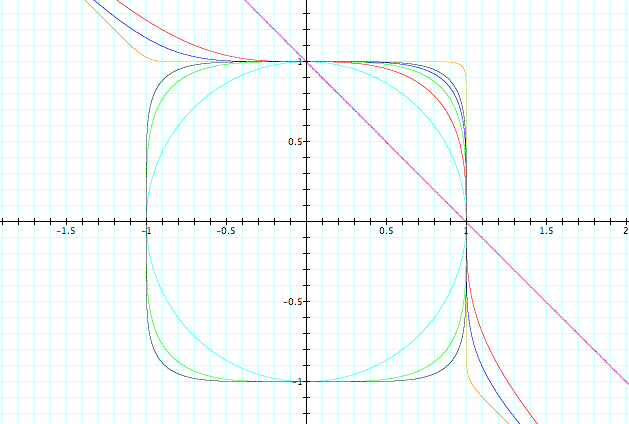
For n = 1 the equation represents a straight line x + y = 1, with negative slope.
For n = 2 the equation represents a circle centered at (0,0) and radius = 1.
Observations:
This Graphing Calculator 3.5 movie will show you the evolution from straight line, to circumference, to a pseudo-square while varying n from 1 to 15. There is a problem with the movie though. What is wrong? As n varies from 1 to 15 the line only exists in the first quadrant. But we KNOW the lines for n = 1 to 15 exist at least in 3 of the quadrants (see Figure 1 above). Why then is only the first quadrant plotted?
The problem is that, as n varies from 1 to 15, Graphing Calculator calculates the line for intermediate NON-integer values of n. (Observation: maybe the line only exists in the first quadrant for non=integer values of n? We explore that below). To solve the problem we modify the equation by introducing the ceiling() function --so n only hits integer values. This improved movie shows clearly the sequence of plotted lines for different integer values of n.
Another possible exploration is varying m
in ![]() . We look at how
each of the lines in this family changes, as we modify m
from 1 to larger values. We observe that as n increases
the variation introduced by higher values of m is hardly
noticeable: while for n = 1, x+y=1 is very different
from x+y=10000, for n = 25 there is hardly any difference
between m = 1 or m = 1000. Figure 2 shows the equation
for n = 25 and m = 1, 100, 10000.
. We look at how
each of the lines in this family changes, as we modify m
from 1 to larger values. We observe that as n increases
the variation introduced by higher values of m is hardly
noticeable: while for n = 1, x+y=1 is very different
from x+y=10000, for n = 25 there is hardly any difference
between m = 1 or m = 1000. Figure 2 shows the equation
for n = 25 and m = 1, 100, 10000.
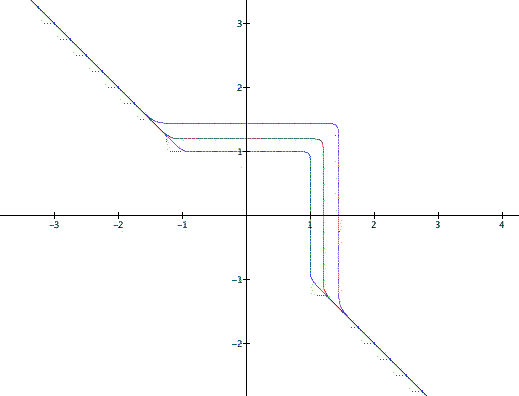
(Since m does not affect the shape of the curve for a given value of n, in the following discussion we will default m to 1.)
Lets explore now ![]() for n = 1 to 25.
for n = 1 to 25.
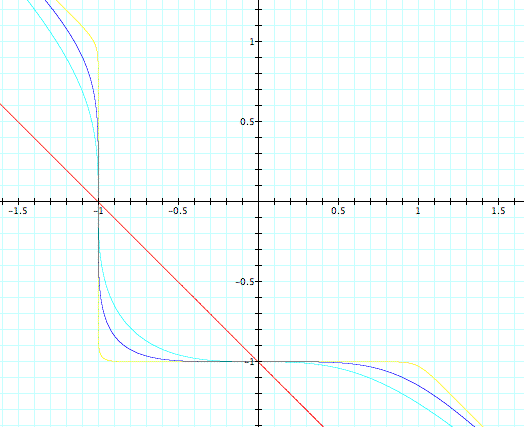
Figure 3 shows he lines that correspond to
odd values of n (1,3,5 up to 25 in yellow). For negative
m, n cannot be an even value since that would make the terms
![]() and
and ![]() always positive and therefore their sum would never be negative.
always positive and therefore their sum would never be negative.
Now lets explore negative values of n. (Let's assume m=1). For n= -1 the equation becomes:

which is a rectangular hyperbola (we let you check that out). Explore for other negative values of n in the movie we have prepared.
Next, lets look at non-integer values of
n. Figure 5 shows ![]() , for
m = 4 and for n = 1, 1.5, 2 and 25. (By now
you should know which one corresponds to n = 1, n =
2, and n = 25.)
, for
m = 4 and for n = 1, 1.5, 2 and 25. (By now
you should know which one corresponds to n = 1, n =
2, and n = 25.)
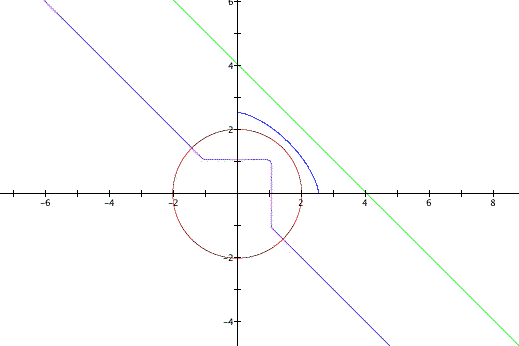
We come back to the question: Do non-integer
values of n make the line to exist only in the first quadrant?
The answer is: it depends on the rational value. For n = 1.5
we would have ![]() . If
there is a square root, both x and y have to be
positive for the line to exist in the real plane. On the other
hand, for n = 1/3,
. If
there is a square root, both x and y have to be
positive for the line to exist in the real plane. On the other
hand, for n = 1/3, ![]() is a real number for negative values of x (e.g., for x=-8, the
result is -2).
is a real number for negative values of x (e.g., for x=-8, the
result is -2).
Figure 6 plots the equation for n = 4/3 and m = 1.
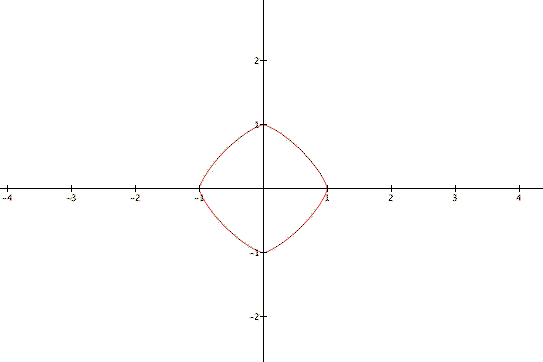
This movie
will show you the graph as the exponent in ![]() varies between 1/7 and 7/2 (you can easily change those
values). (Please, do not get confused by the fact that in the
GC file we use the name "n" for the numerator in the
exponent; "n" varies between 1 and 7 while the denominator
"a" varies between 2 and 7).
varies between 1/7 and 7/2 (you can easily change those
values). (Please, do not get confused by the fact that in the
GC file we use the name "n" for the numerator in the
exponent; "n" varies between 1 and 7 while the denominator
"a" varies between 2 and 7).
It is interesting to see how the line changes from concave to convex when the exponent increases from <1 to >1. Why is the curve closed and it exists in the four quadrants for n = 4/3 and n = 2/3, while for n = 1/3 it is open and it only exists in 3 quadrants?
Finally the following gcf file will allow you to visualize all this in 3D and play with n and m values. Figure 7 is a snapshot for n = 25 and m = 1 and m = 100000; it is the 3D version of Figure 2 above.
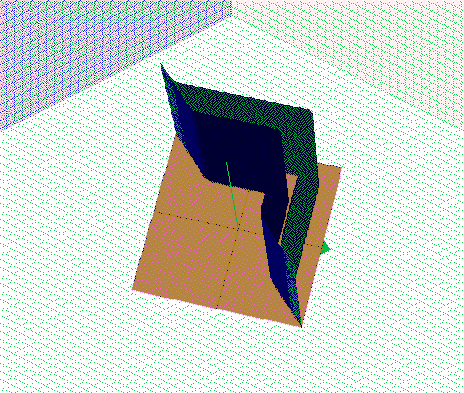
Return to Cristina's page with all the assignments.